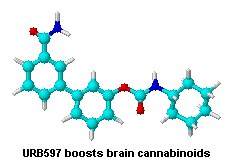Feeling chock full of cr*p after the festivities, wondering about which detox program to choose? Don’t bother! According to The Sense About Science group, a charitable trust that aims to provide the public with the truth about purportedly scientific and medical claims, a glass of tap water and an early night are the best remedies.
As it turns out, evolution has endowed us with our own built-in “detox” mechanisms, thankfully. The gut, for instance, prevents bacteria and many toxins from entering the body in the first place. If you think about it you are a hollow tube from mouth to anus, the interior of that tract is essentially “outside”.
However, when harmful chemicals enter the body, the liver, that great chemical plant, rips apart toxin or makes them water soluble so that they can be filtered out and excreted by the kidneys. The body thus detoxifies itself. That phrase “water soluble” is key to understanding how to help things along. The body is re-hydrated with ordinary tap water. It is refreshed with a good night’s sleep.
These processes do not occur more effectively as a result of taking ‘detox’ tablets, wearing ‘detox’ socks, having a ‘detox’ body wrap, eating Nettle Root extract, drinking herbal infusions or ‘oxygenated’ water, following a special ‘detox’ diet, or using any of the other products and rituals that are promoted. They waste money and sow confusion about how our bodies, nutrition and chemistry actually work.
 Well…it’s our fourteenth wedding anniversary this year, today, so a good time to remind sciencebase readers of our alternative chymical
Well…it’s our fourteenth wedding anniversary this year, today, so a good time to remind sciencebase readers of our alternative chymical  Latest on Urealert – a new drug known cryptically as URB597 boosts levels of brain cannabinoids and so could find use as in treating pain, depression, and anxiety disorders, without patients having to use cannabis itself…
Latest on Urealert – a new drug known cryptically as URB597 boosts levels of brain cannabinoids and so could find use as in treating pain, depression, and anxiety disorders, without patients having to use cannabis itself…